In today's business landscape, marketing mix modeling has emerged as a critical tool for companies seeking to optimize their marketing efforts and maximize their return on investment. As marketing campaigns merge offline and online channels, and with the new abundance of data, the industry is searching for more data-driven solutions. Additionally, with the disappearance of tracking cookies, marketers face a new challenge in measuring the efficiency of their online campaigns.
Marketing mix modeling (MMM) offers a data-driven approach to measuring the impact of various marketing channels and tactics on business outcomes. By using machine-learning techniques, companies can identify the drivers of success and make informed decisions about how to allocate their marketing budgets and optimize their strategies for maximum impact.
In a previous article, we discussed MMM and the potential insights it can bring for your business, but getting started can be daunting. This article provides actionable actions to help businesses get started with Marketing Mix Modeling, understand its benefits, and overcome its challenges.
1. Define a clear problem statement
The first step in implementing MMM is to define a clear problem statement that you are looking to solve. This problem should be related to your company's marketing campaigns and should be something that you want to optimize. Examples of potential problem statements might be:
- "We want to optimize our marketing spend across different channels to maximize ROI."
- "We want to understand which marketing campaigns are driving the most sales."
Defining a clear problem is crucial, because it will help you focus your analysis and ensure that you get the most valuable insights from your MMM.
Further in this article, we will use the example of a retail company with the following challenges:
- The company wants to increase their revenue
- The company wants to evaluate the previous performance of TV, radio, out-of-home (OOH), paid search (brand), paid search (other), video, social media, and owned media for the past 6 months
- They want to optimize their budget for the next 6 months across the previous channels.
2. Understand what MMM will bring you
Before you start with MMM, it's important to understand what it will possibly bring for your business. MMM will provide you with an overview of your marketing campaigns, including which channels worked and which didn't, and where you can optimize your marketing budget. It will also allow you to optimize your budget for the next chosen period of time based on the previous data.
By understanding what MMM will bring you, you can ensure that you're setting the right expectations for your analysis and that you're prepared to act on the insights you gain.
In our case, the retail company wants a bi-yearly report with the following insights: what channels performed well in the last 6 months, what were the channels’ ROI and how - knowing our next 6 months total budget - can we optimize best to increase our revenue.
3. Determine the data you need
Once you've defined your problem and understand what MMM will bring you, you need to determine the data you need to start your analysis.
There are 3 mains important factors to provide:
- A reliable KPI (sales, revenues, transactions,...). The selected KPI should be built upon your problem statement and aligned with your business goals.
- Demand generators for each media channel. These metrics should quantify the cost and/or impact of marketing activities, they can be the cost of your marketing campaigns, the clicks and impressions in digital media or the GRPs for offline media.
- External factors that can impact your sales
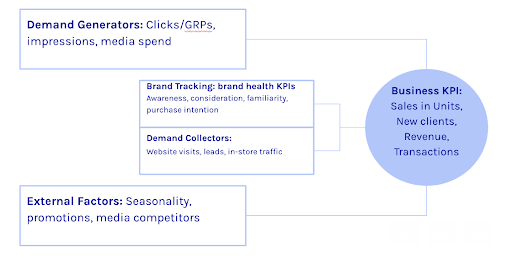
Our retail company has its sales numbers week by week for the last 3 years. They must provide a demand generator for each channel. They decide to provide the GRPs for TV and radio, the gross spend for OOH and for the digital data they will use impressions. The company also needs to give a demand generator for their owned media.
For the external factors, as it’s a retail company, after brainstorming with their marketing advisors they include the different kinds of promotions they have, the weather, the PIB, school holidays and COVID lockdowns, which had a big impact on their total sales over the last three years.
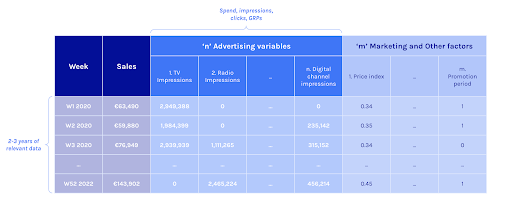
4. Understand how MMM works
MMM works by building a statistical model that estimates the impact of different marketing channels and activities on a company's sales. As we have seen, this model includes both internal and external variables that may impact sales.
Marketing mix models take two crucial factors into account when analyzing the impact of advertising on sales and other key performance metrics: the adstock effect and the saturation of the channels.
The adstock effect refers to the residual impact of advertising on consumer behavior that persists beyond the period in which the advertising was delivered. In other words, after an advertising campaign has ended, consumers may continue to be influenced by it for a certain period of time. This residual impact is called the adstock effect. It can vary depending on factors such as the duration and intensity of the advertising, the type of media used, and the characteristics of the target audience. This captures the impact of the campaign over time, and allows the model to estimate the long-term impact of each campaign on sales.
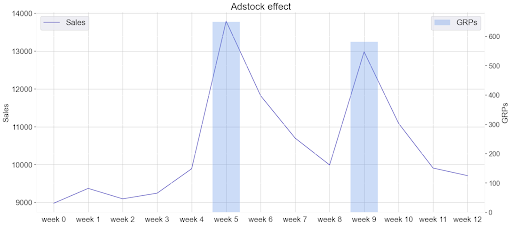
Another important consideration in MMM is channel saturation. This refers to the point at which additional spending on a particular marketing channel (such as advertising on television) no longer results in incremental sales or other KPIs. MMM models typically include a saturation variable that accounts for this effect and helps marketers determine the optimal level of spending for each channel.
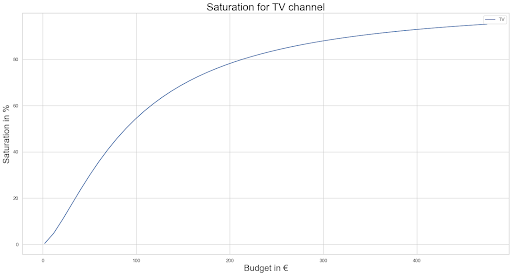
5. Gather the right insights
By taking into account all variables such as the external factors, level of saturation of each channels and their adstock effect, the model might give the marketers the following insights on their campaigns:
- TV, OOH and Paid search (other) have driven the revenue and each have an excellent ROI. TV is saturated so despite its excellent results, investing in it would not increase sales. The model advises the team to increase both OOH and Paid search by 2.3% for the next 6 months.
- The rest of the channel's budget can also be slightly redistributed to optimize revenue.
- Optimizing the next budget would bring according to the model forecast an increase of 5.1% in revenue.
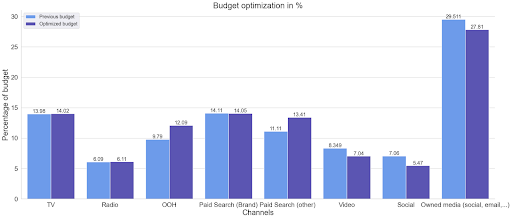
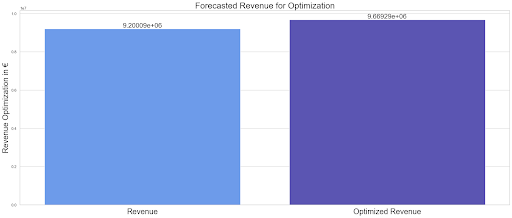
In conclusion, Marketing Mix Modeling is a powerful tool for understanding the impact of your marketing campaigns on sales and optimizing your marketing mix for maximum ROI. With the ability to account for internal and external variables, the adstock effect, and channel saturation, MMM can provide unparalleled insights into the drivers of sales for your business. So, if you want to take your marketing efforts to the next level and achieve unprecedented success, it's time to harness the full power of MMM.



